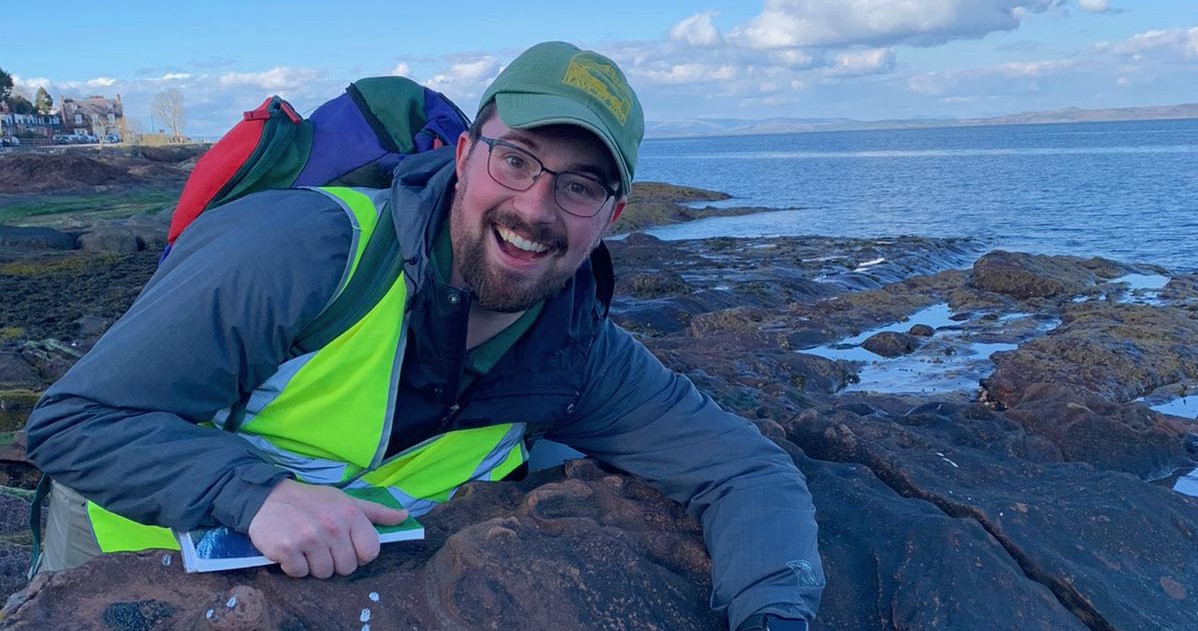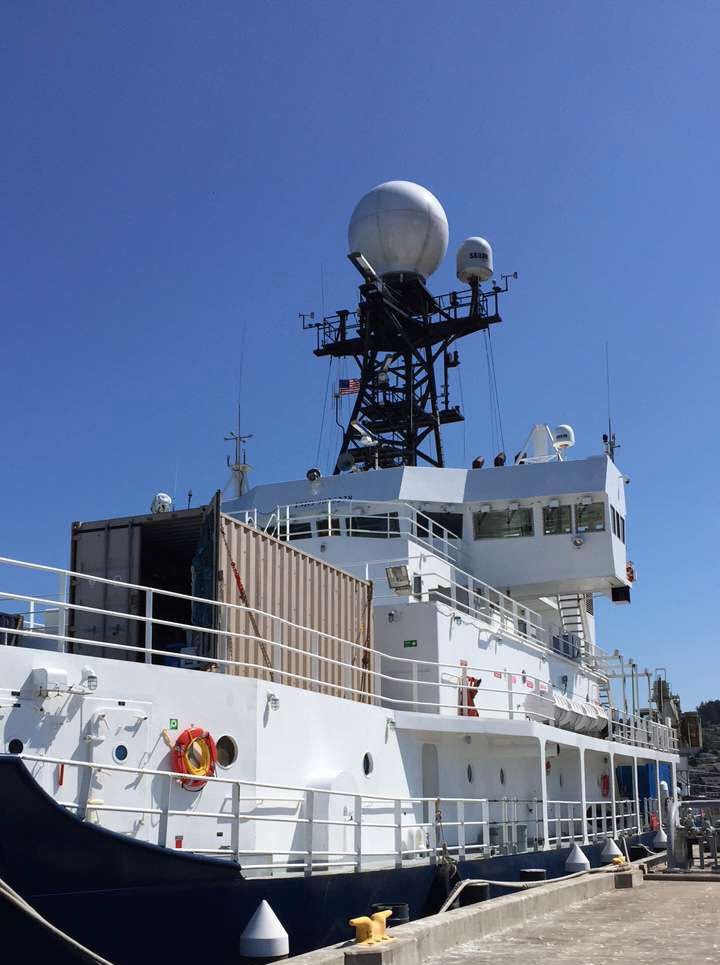In Lava With Volcanology
Catching Up With A Former NOAA Hollings Recipient
 2016 Hollings Scholar Nicholas Barber, BS geoscience '18, on a field trip in Scotland.
2016 Hollings Scholar Nicholas Barber, BS geoscience '18, on a field trip in Scotland.
November 4, 2022
Nicholas Barber, BS geoscience '18, was one of the first two Drexel students to receive the NOAA Ernest F. Hollings Scholarship in 2016. Now he's a postdoctoral research fellow studying Indonesian volcanoes who credits his Hollings experience with setting him on his current career path.
The Hollings Scholarship, administered by the National Oceanic and Atmospheric Administration (NOAA), provides support and multidisciplinary learning experiences for undergraduate students interested in pursuing research, public service, or teaching careers in the oceanic and atmospheric sciences. We asked Nick to answer a few questions about Hollings, what he’s been up to since graduating from Drexel, and his advice for applicants.
Why did you apply for the NOAA Hollings Scholarship?
When I applied in 2016, I was coming off of several terms of experience in different research settings across Drexel. For my last co-op, I wanted to find an opportunity which would expose me to research outside of Drexel. Specifically, I wanted to seek out a research co-op that involved public-facing science in a government role. The NOAA Hollings program provides an eight-week internship with any NOAA research facility, and this seemed like the perfect opportunity which aligned with my goals. The possibility of field work also enticed me, but more than anything, I wanted the opportunity to grow my technical skills.
 The R/V Revelle oceanographic research ship
The R/V Revelle oceanographic research ship
What did you do during your Hollings internship?
I worked for the Earth-Oceans Interaction (EOI) group, a division of the Pacific Marine Environmental Lab, based out of Newport Oregon. I was working on a marine volcanology research project, focused on the volcano Axial Seamount. Axial is the best studied submarine volcano on Earth, having been studied by NOAA researchers since the 1980s, and holds important insights into the processes that shape oceanic nutrient cycling, marine eruptions, and marine ecosystems. I was developing methods to process and visualize the deformation data available from EOI’s cabled monitoring network, before, during, and after the volcano’s 2015 eruption.
This was primarily a computational project; I had the opportunity to learn to code for the first time using MATLAB and FORTRAN. I then got to spend 12 days at sea aboard the R/V Revelle, working with the EOI team and their collaborators on deploying new monitoring equipment, remote surveyors, and autonomous drones on Axial Seamount to track its growth ahead of its next eruption. I had the opportunity to present my work at the Hollings symposium after the internship wrapped up, and I won Best Presentation in my category.
 Nick with his Best Presentation award from the Hollings symposium.
Nick with his Best Presentation award from the Hollings symposium.
What are you up to now?
I recently completed my PhD in Earth Sciences at the University of Cambridge, UK, where I studied the development and evolution of magmas all over the world using computational and laboratory methods, with a particular focus on volcanoes in Indonesia. I was funded by the Gates Cambridge Scholarship for my PhD (thanks UREP!). After successfully defending my thesis on August 30th, 2022, I began a postdoctoral research fellowship at McGill University in Montréal, Canada.
My postdoctoral research is focused on the magmatic architecture of the Ijen caldera in Java, Indonesia, using cutting edge spectroscopic and tomographic techniques applied to minerals and glasses. I am actively applying to faculty jobs, and hoping to secure a permanent position at an undergraduate-focused university in the US.
How did receiving this fellowship help you on your career path?
This fellowship was essential in setting me on my career path. I was exposed to new approaches and perspectives on conducting volcano science, while developing practical skills I wouldn’t have been able to develop as easily at Drexel. This was my first time working on volcano monitoring, providing me with a hands-on understanding of the hard work required to monitor active volcanic systems to prepare for eruptions. This experience also set me apart in graduate school applications, providing a diversity of experiences. This experience also expanded my professional and personal scientific network, helping me make lifelong friendships which buoyed me through graduate school and beyond.
What advice do you have for applicants?
My first big piece of advice is to read the essay requirements carefully! NOAA is looking for applicants who understand their mission and are committed to public-facing research, and you need to make the case in the application. You also need to make sure you read up on the different NOAA labs and have a clear idea of where you want to work. Critically though, don’t limit yourself to places you think fit your past experience best. You can make a leap and do something totally different, just make a case for why your transferable skills prepare you for this role.
The NOAA Ernest F. Hollings Scholarship provides support and multidisciplinary learning experiences for undergraduate students interested in pursuing research, public service, or teaching careers in the oceanic and atmospheric sciences. The award includes academic assistance for full-time study during two academic years and a 10-week, full-time summer internship at a NOAA facility. Learn more on the official Hollings Scholarship website.
Interested in applying for this fellowship? Email UREP at fellowships@drexel.edu to be connected to an advisor.